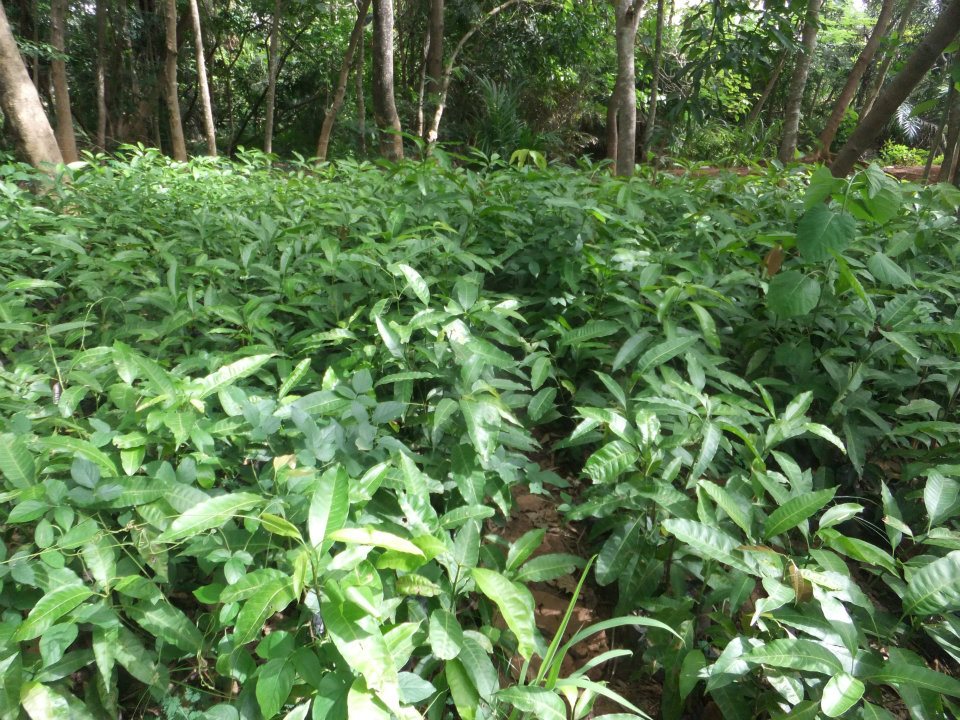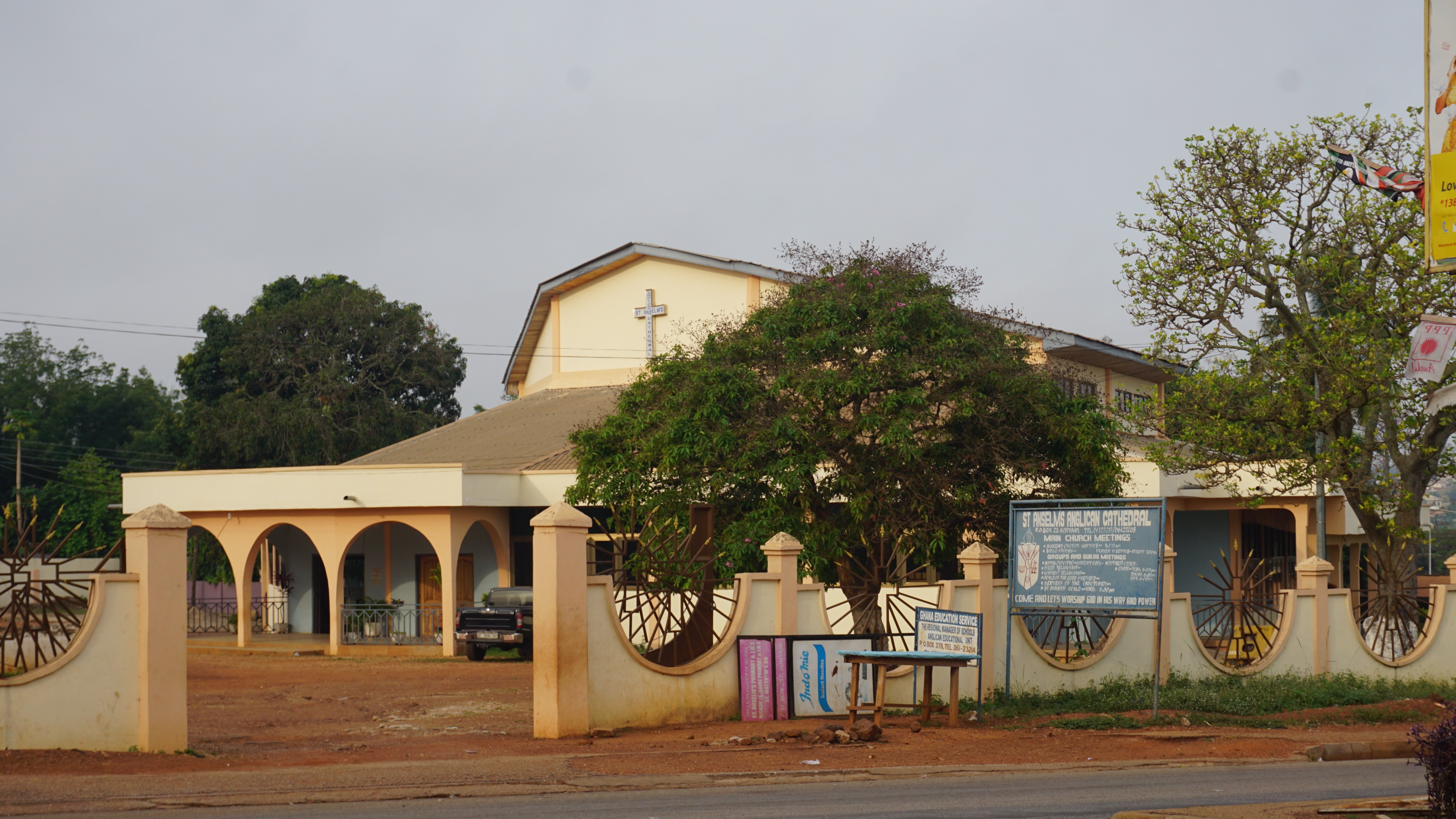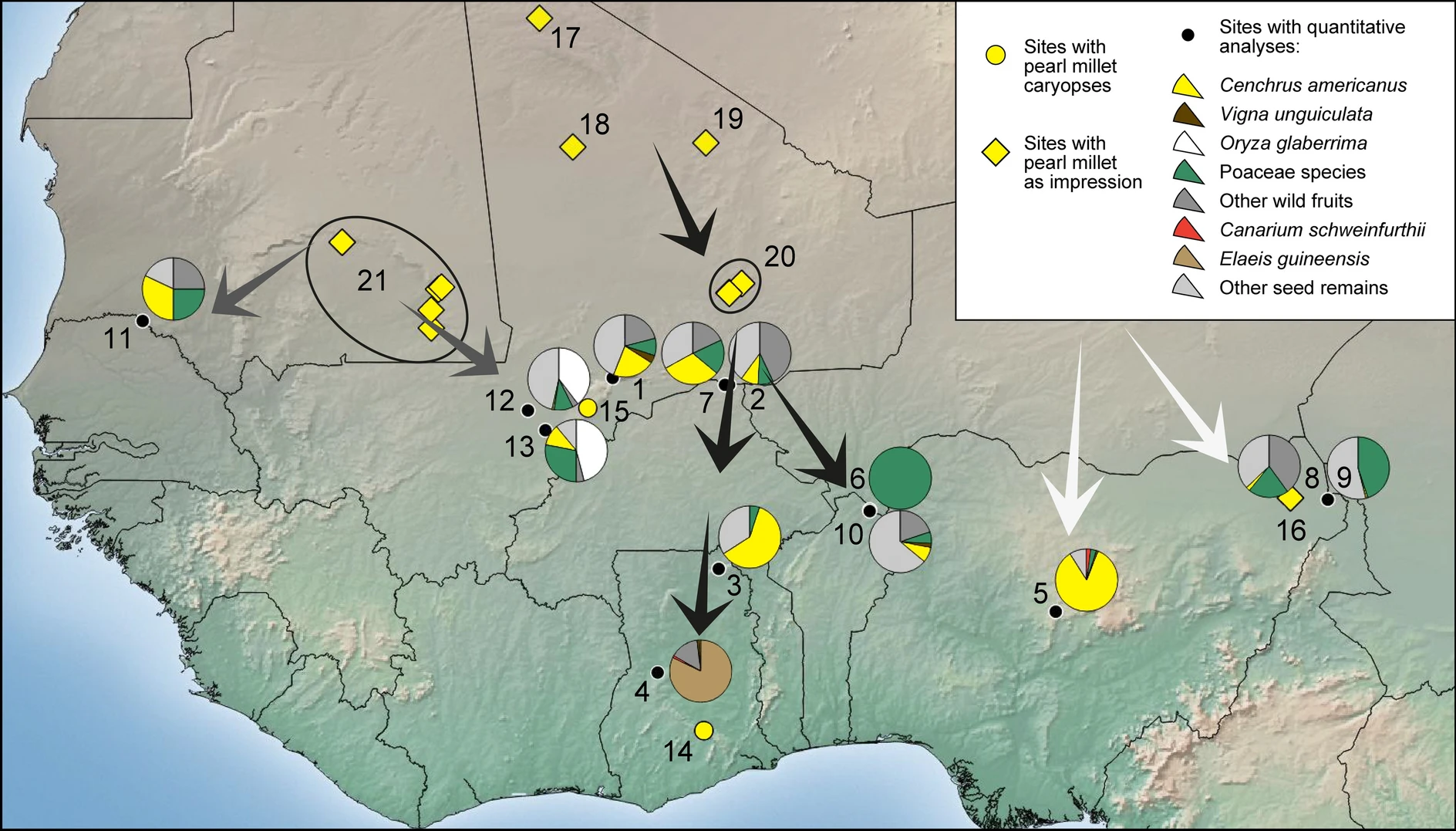|
Techiman
Techiman (Akan language, Akan: ''Takyiman'') is a city and the capital of the Techiman Municipal District, Techiman Metropolitan District and the Bono East Region of Ghana. The city is located about from Sunyani and about away from Kumasi. It has a tropical savanna climate, experiencing two wet seasons and a dry season. Techiman has a population of 67,241 as of the 2010 census released by the Ghana Statistical Service. The majority of ethnic groups in the city included the Akan people, Akan, Bono people, Bono, Gonja people, Gonja, Dagomba people, Dagomba, Sisala, and Mamprusi people. The mayor of the city's metropolitan, as of 2021 is Benjamin Yaw Gyarko. The city was formally founded in 1740 and officially established as the Bono-Tekyiman state in the 1940s, after the Bono state's capital Bono Manso was taken over in 1723. After a 2018 Ghanaian new regions referendum, referendum in 2018 was passed with the focus of creating new regions in Ghana, Techiman was selected to be t ... [...More Info...] [...Related Items...] OR: [Wikipedia] [Google] [Baidu] |
Bono East Region
The Bono East region of Ghana is a new region carved out of the Brong Ahafo region. The capital of the new region is Techiman. This creation of this new region was in fulfillment of a promise made by the New Patriotic Party prior to the 2016 Ghana general election. Upon winning the elections, the President, Nana Akuffo Addo created the Ministry of Regional Reorganization to oversee policy formulation and implementation. In all six new regions are to be created from the existing ten regions of Ghana. The other regions are Ahafo, Western North, Savannah, North East, and Oti regions. The execution of plans for the creation of the regions was seeded to the newly created Ministry of Regional Reorganization and Development which is under the leadership of Hon. Dan Botwe. Government of Ghana ministry charged with the responsibility of supervising the creation of new regions in Ghana. In March 2017, the ministry sent the blue print for the creation of the region along with othe ... [...More Info...] [...Related Items...] OR: [Wikipedia] [Google] [Baidu] |
Bono People
The Bono, also known as the Brong or Abron, are an Akan people of central Ghana and northeastern Ivory Coast. They speak the Bono Twi and form one of the largest matrilineal Akan groups. Historically, the Bono were the first Akan to develop a centralized state named Bono state with the core political centers located at Bono Manso and Begho. The Akan people trace their origin to the Bono state based on history and oral tradition. Traditionally, Bono is the hub of Akan culture as various key elements of the culture emanate from. Bono is often highlighted as the cradle of Akan civilisation. The Bono became prosperous at Bono state through gold discovery, trade and commerce from neighbouring partners and across Africa. As part of commercial transactions, gold dust were used as currency and gold weights as a measure of value. In 1471 when the first European-Portuguese visited Gold Coast (now Ghana), Bono Manso and Begho were an urban cities in West Africa. Begho at its peak had a ... [...More Info...] [...Related Items...] OR: [Wikipedia] [Google] [Baidu] |
Techiman Municipal District
Techiman Municipal District is one of the eleven districts in Bono East Region, Ghana Ghana, officially the Republic of Ghana, is a country in West Africa. It is situated along the Gulf of Guinea and the Atlantic Ocean to the south, and shares borders with Côte d’Ivoire to the west, Burkina Faso to the north, and Togo to t .... It was originally created as an ordinary district assembly on 10 March 1989, when it was known as Techiman District, until the northern part of the district was split off to create Techiman North District on 28 June 2012; thus the remaining part has been retained as Techiman District. This was later elevated to municipal district assembly status and was renamed as Techiman Municipal District in that same year. The municipality is located in the western part of Bono East Region and has Techiman as its capital town. List of settlements Sources * District: Techiman Municipal District References Districts of Bono East Region {{BonoE ... [...More Info...] [...Related Items...] OR: [Wikipedia] [Google] [Baidu] |
Bono State
Bono State (also known as Bonoman) was the first centralized Akan state, founded by the Bono people in what is now central Ghana. Bonoman is generally considered a cultural, political ancestor and origin to Akan subgroups that migrated southward and eastward during and after its decline in the 18th centuries. The capital centered at Bono Manso, the state flourished in the forest–savanna transition zone and encompassed areas within present-day Bono Region, Bono East Region, and Ahafo Region, as well as parts of eastern Ivory Coast. Bono state was a trading centre connecting merchants across Africa. The state's wealth grew substantially through the control of gold production and trade, with material culture such as goldweights, brassworking, and textiles attesting to its urban complexity. The Akan gold trade to the savannah and far beyond had been essential since the opening of Akan goldfields to Juula merchants under Mali and Songhai empire dating back to at least 15th cen ... [...More Info...] [...Related Items...] OR: [Wikipedia] [Google] [Baidu] |
Districts Of Ghana
The Districts of Ghana are second-level administrative subdivisions of Ghana, below the level of Regions of Ghana, region. There are currently 261 local metropolitan, municipal and district assemblies (or MMDA's). History The districts of Ghana were re-organized in 1988/1989 in an attempt to decentralize the government and to assist in development. The reform of the late 1980s subdivided the regions of Ghana into 110 districts, where local district assemblies should deal with the local administration. By 2006, an additional 28 districts were created by splitting some of the original 110, bringing their number up to 138. In February 2008, there were more districts created and some were upgraded to municipal status. This brought the final number to 170 districts in Ghana. Since then, a further 46 districts have been added since 28 June 2012 bringing the total to 216 districts. Types of Districts Districts are classified into three types: Ordinary Districts with a minimum popul ... [...More Info...] [...Related Items...] OR: [Wikipedia] [Google] [Baidu] |
Bono Manso
Manso or Maaso, often referred to as Bono-Manso in historical contexts, was an urban centre of significant religious, political, and economic influence. It was situated on the northern Forest–savanna mosaic, forest savanna zone of Akan realm. Founded c. 1000 CE, it was the capital of the Bono state from the 11th century to 1723. Bono Manso flourished into a prominent and cosmopolitan centre of trade to the Bono state, attracting Muslim Dyula people, Juula from the Mali Empire, Mali empire and several merchants across North Africa, North and West Africa. According to oral traditions, merchants brought textiles, salt, and brass where they traded them for gold, kola, and slaves. Just like its twin-counterpart Begho, Bono Manso had a huge market called Dwabirem in the southwest direction, linking the sub-Saharan and ultimately European long distance trade. After the Asante destroyed Bono Manso in 1723, Techiman succeeded it. Presently, Bono Manso is a village north of Techiman in ... [...More Info...] [...Related Items...] OR: [Wikipedia] [Google] [Baidu] |
Regions Of Ghana
The regions of Ghana are the first level of subnational government administration within the Republic of Ghana. As of 2020, there are 16 regions, which are further divided for administrative purposes into 260 local Districts of Ghana, metropolitan, municipal and district assemblies (or MMDA's). Current regions The ten former regions were officially established in 1987, when the Upper West Region was inaugurated as the state's newest administrative region, although it had already functioned as an administrative unit since the break-up of the Upper Region in December 1982, prior to the 1984 national census. A 2018 Ghanaian new regions referendum, referendum on the creation of six new regions was held on 27 December 2018, where all proposed new regions were approved. Previous regional configurations Independence - 6 March 1957 At independence in March 1957, the Northern Territories, Ashanti, Trans-Volta Togoland and the Gold Coast came together to form Ghana. There were init ... [...More Info...] [...Related Items...] OR: [Wikipedia] [Google] [Baidu] |
Postal Codes In Ghana
Postal codes were adopted in Ghana on 18 October 2017, following the launch of the National Digital Address System. As a joint venture between Ghana Post (with support from the Government of Ghana]) and Vokacom Ltd as Ghana Post GPS, GhanaPost GPS, the Digital Address System assigned postal codes and unique addresses to every square in Ghana. Ghana's postal codes are alphanumeric. The first two characters form the postcode district - the first letter represents the region, and the second character represents the district in which the address is located. The next three to five digits represent the postcode area and identify a more precise location within area. Together, the postcode district and postcode area form the postal code. For example, the Kwame Nkrumah Memorial Park & Mausoleum in Accra is located in postal code GA184, where GA represents the postcode district - G for the Greater Accra Region and A for the Accra Metropolitan District - and 184 represents the postcode ... [...More Info...] [...Related Items...] OR: [Wikipedia] [Google] [Baidu] |
Sunyani
Sunyani () is a city and the capital of the Sunyani Municipal District and the Bono Region of Ghana. The city is located about northwest of Kumasi and away from Accra. It is the sixth largest city in the country as of the 2010 census, with a population of 75,366 people. Ethnic groups such as the Akan, Northerner, Ewe, and Ga-Adangbe resided in the city along with others. As of 2024, the current mayor of the municipality is Hon. Ansu Kumi. Sunyani's economy is largely agrarian, with the city being known for its ever-growing cocoa bean production. The city is home to the Roman Catholic Diocese of Sunyani which is under the bishop of Matthew Kwasi Gyamfi. Sunyani is also home to many educational institutions, such as the Sunyani Technical University and the University of Energy and Natural Resources. Etymology ''Sunyani'' is a corrupted form of the Akan word ''Sonnwae''. ''Sunyani'' comes from the Akan word ''Osono'', which means "elephant". History Historically, Sunya ... [...More Info...] [...Related Items...] OR: [Wikipedia] [Google] [Baidu] |
Akan People
The Akan () people are a kwa languages, Kwa group living primarily in present-day Ghana and in parts of Ivory Coast and Togo in West Africa. The Akan speak languages within the Central Tano languages, Central Tano branch of the Potou–Tano languages, Potou–Tano subfamily of the Niger–Congo languages, Niger–Congo family.''Languages of the Akan Area: Papers in Western Kwa Linguistics and on the Linguistic Geography of the Area of Ancient''. Isaac K. Chinebuah, H. Max J. Trutenau, Linguistic Circle of Accra, Basler Afrika Bibliographien, 1976, pp. 168. Subgroups of the Akan people include: the Adansi, Agona, Akuapem people, Akuapem, Akwamu, Akyem, Anyi people, Anyi, Ashanti people, Asante, Baoulé people, Baoulé, Bono people, Bono, Chakosi people, Chakosi, Fante people, Fante, Kwahu, Sefwi people, Sefwi, Wassa, Ahanta people, Ahanta, Denkyira and Nzema people, Nzema, among others. The Akan subgroups all have cultural attributes in common; most notably the tracing of royal m ... [...More Info...] [...Related Items...] OR: [Wikipedia] [Google] [Baidu] |
Ghana
Ghana, officially the Republic of Ghana, is a country in West Africa. It is situated along the Gulf of Guinea and the Atlantic Ocean to the south, and shares borders with Côte d’Ivoire to the west, Burkina Faso to the north, and Togo to the east. Ghana covers an area of , spanning diverse ecologies, from coastal savannas to tropical rainforests. With nearly 35 million inhabitants, Ghana is the second-most populous country in West Africa. The capital and largest city is Accra; other significant cities include Tema, Kumasi, Sunyani, Ho, Cape Coast, Techiman, Tamale, and Sekondi-Takoradi. The earliest kingdoms to emerge in Ghana were Bonoman in the south and the Kingdom of Dagbon in the north, with Bonoman existing in the area during the 11th century. The Asante Empire and other Akan kingdoms in the south emerged over the centuries. Beginning in the 15th century, the Portuguese Empire, followed by other European powers, contested the area for trading r ... [...More Info...] [...Related Items...] OR: [Wikipedia] [Google] [Baidu] |
Kumasi
Kumasi is a city and the capital of the Kumasi Metropolitan Assembly and the Ashanti Region of Ghana. It is the second largest city in the country, with a population of 443,981 as of the 2021 census. Kumasi is located in a rain forest region near Lake Bosomtwe and is located about from Accra.Straight line distances from: Daft Logic; The city experiences a tropical savanna climate, with two rainy seasons which range from minor to major. Major ethnic groups who live in Kumasi are the Ashanti people, Asante, Mole-Dagbon people, Mole-Dagbon and Ewe people, Ewe. As of 2021, the mayor of the metropolitan is Samuel Pyne. The city was the capital of the Asante Empire, which at its peak covered large parts of present-day Ghana and the Ivory Coast. After being taken over by the British Empire, British in 1896 coupled with experiencing a fast population growth, Kumasi rapidly grew with improvements to its infrastructure, such as roads and the addition of railways. After Ghana gained it ... [...More Info...] [...Related Items...] OR: [Wikipedia] [Google] [Baidu] |



